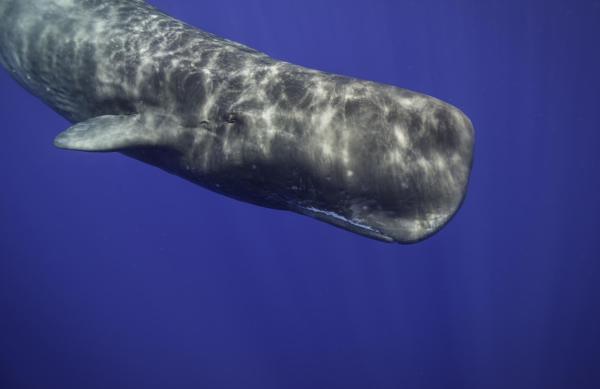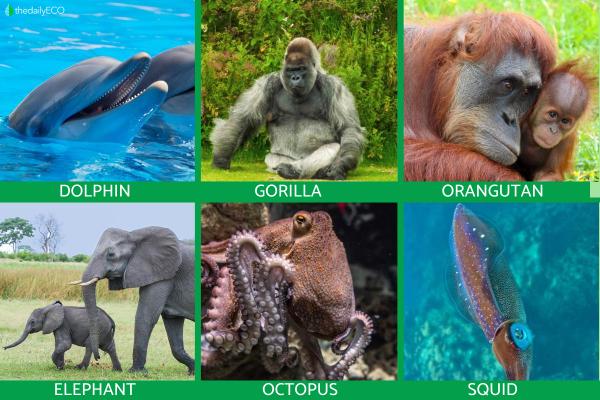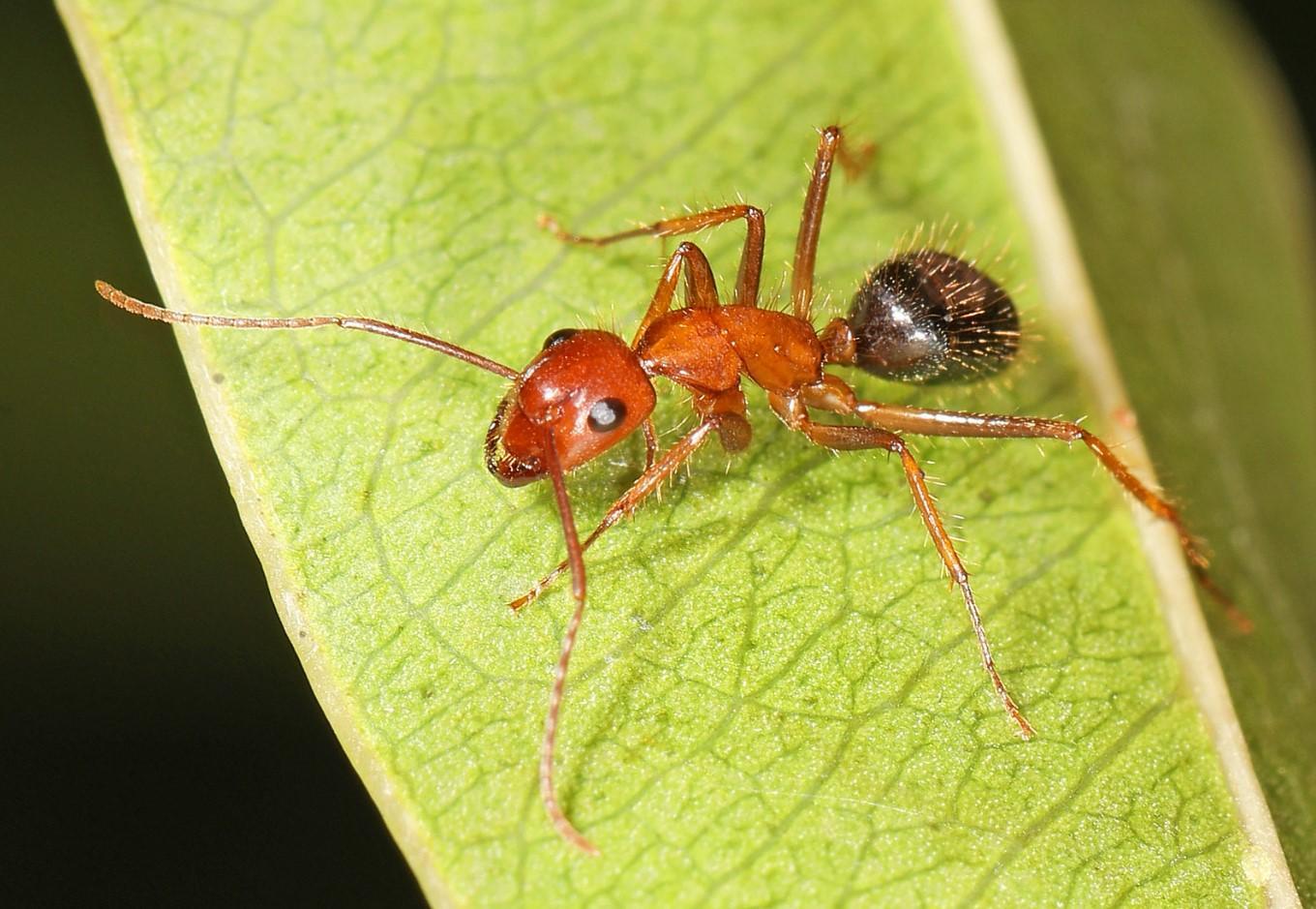What Animal Has the Biggest Brain?


The animal with the biggest brain in the animal kingdom is the sperm whale. The brain is the largest organ of the central nervous system. It is used to control the rest of the body's organs, sending and receiving signals through said nervous system. Not all living animals have brains, with the exceptions largely existing in marine animals such as jellyfish, sea sponges and coral. In vertebrates, the brain an spinal cord are enveloped in membranes known as the meninges. Not all brains are proportionately the same size, with some large animals having relatively small brains and vice versa.
At thedailyECO, we investigate large-brained animals by asking what animal has the biggest brain? We provide information on this animal, plus the 8 animals with the largest brains in nature.
The animal with the largest brain in the world
The sperm whale (Physeter macrocephalus) has the largest brain of any animal species in nature. This is a large cosmopolitan cetacean that inhabits almost all of Earth's oceans. They are known as one of the animals that reaches the greatest depths when diving in search of food. The size of their brain is particularly striking since the largest animal in the world is the Atlantic blue whale, but their brain comes in second to the sperm whale.
As a cetacean, the sperm whale is a mammal. While they are the mammal with the largest brain, they are also the animal with the largest brain in nature. This brain can weigh over 20 lb/9 kg, although the average size is around 17 lb/7.8 kg. When we compare this to the human brain, we can see the human brain weighs an average of 3 lb/1.4 kg for males, with females being around 150 g lighter.
That the sperm whale and other cetaceans have large brains compared to other terrestrial animals is not a coincidence. The reasons for this large brain size include the following:
- The ocean offers prey that has a high caloric value, supporting brain growth.
- Aquatic life alleviates the effect of gravity, allowing the development of a large head with a huge brain.
- The sound of water can reach fetuses promoting early brain development.
Various scientific investigations show the evolution of the brain of sperm whales is subject to the demands related to the maintenance and coordination of social groups. One hypothesis is that the richness of such cooperative behaviors increases with brain size and group stability in whale and dolphin species. This suggests that large brains arise as an evolutionary response to complex social environments .

What animal has the largest brain relative to their body size?
Despite being much smaller in body weight and size, a dolphin's brain is around 2.2 lb/1 kg in weight. This shows that a sperm whale's brain is not the largest relative to its body. A sperm whale can weight up to 40 metric tons, making its brain to body ratio around 1:5000.
A study in 2009 calculated the relative brain size of many different animals[1]. They determined that the animal with the largest brain relative to their body size were ants of the genus Brachymyrmex. These ants had brains which accounted for around 14% of their body weight, giving them a brain to body ratio of around 1:7. However, further studies have pointed out that smaller animals have a les complex nervous system, despite relatively large brains[2].
Having a large brain in relation to their body forces animals such as ants to develop adaptations in their anatomy, physiology and ecology to cope with this feature. These small invertebrates have a high level of cognitive development and very complex social behavior. Their brains are mainly specialized for processing olfactory information.
Within ant societies, not all have the same size in their brain mass. The size of their brain depends on the function that each of them fulfills within the colony. An example is the major and minor worker ants of the species Camponotus floridanus. In these ants, the brains of the major workers are barely 8% larger than those of the minor. Something similar occurs in the case of ants of the Atta genus. In the minor workers, the brain mass occupies 60% of the total volume of the head and in the major workers it occupies only 5%.
Despite this information, much remains to be discovered about the brain of these organisms and many other invertebrates. Learn more about invertebrate physiology with our article on how insects breathe.

Other animals with large brains
In addition to the sperm whale and ants, there are other species that have large brains. They include the following animals:
- Dolphins: in relation to their body size, dolphins have a large brain that offers them a greater opportunity and capacity for learning. Besides humans, dolphins are the only mammals that are capable of vocal and behavioral imitation. They also present complex social behaviors with differentiated relationships and cooperative networks that depend mainly on learning and memory. Learn more about fascinating dolphin behavior with our article on why dolphins play with puffer fish.
- Primates: within the animals known as primates, the species with the largest brain size are the gorilla and the orangutan, reaching a weight of approximately 1 lb/450 g. The chimpanzee is the closest species to the human being in terms of evolution and they have a brain which is about 0.7 lb/320 grams. Primates display complex social behavior, have a good memory and are capable of creating and using tools. They can also recognize and understand the relationships of other individuals by listening to vocalizations.
- Elephants: elephants have one of the largest brains in the land animal world. This can reach up to 11 lb/5 kg have a structure similar to the brain of human beings. This means elephants have the largest brain of all terrestrial animals[3]. Elephants develop complex behaviors related to mourning, play, the use of tools, memory, maternal care and other behaviors. These indicate that elephants are highly intelligent animals, just like cetaceans and primates.
- Cephalopods: the evolutionary ancestors of mollusks such as the octopus and the squid had shells, a characteristic of many other extant mollusks. It is believed that the loss of this shell led to an increase in the size and complexity of the brain. This resulted in the great development of the sense organs and a complex evolution of behavior.
Learn more about cephalopod species with our article on the differences between squid and cuttlefish.

If you want to read similar articles to What Animal Has the Biggest Brain?, we recommend you visit our Facts about animals category.
1. Seid, M. A., Castillo, A., Lara, L. C. E., & Wcislo, W. (2009). Brain scaling in ants: body to brain size ratio. Conference: Entomological Society of America Annual Meeting 2009.
https://www.researchgate.net/publication/267892224_Brain_scaling_in_ants_body_to_brain_size_ratio
2. Seid, M. A., Castillo, A., & Wcislo, W. T. (2011). The allometry of brain miniaturization in ants. Brain, behavior and evolution, 77(1), 5–13.
https://doi.org/10.1159/000322530
3. Hart, B. L., Hart, L. A., & Pinter-Wollman, N. (2008). Large brains and cognition: where do elephants fit in?. Neuroscience and biobehavioral reviews, 32(1), 86–98.
https://doi.org/10.1016/j.neubiorev.2007.05.012
- Bayo, E.F. (2020). The cetacean brain. Cytoarchitectural divergences and cognitive convergences with respect to large-brained land mammals.
- Eberhard, W. G., & Wcislo, W. T. (2012). Miniature brains.
- Guerra, A. (2006). Evolutionary strategies of cephalopods.








